‘It’s not just about dying’: Uganda’s pioneers of palliative care undaunted by huge challenges
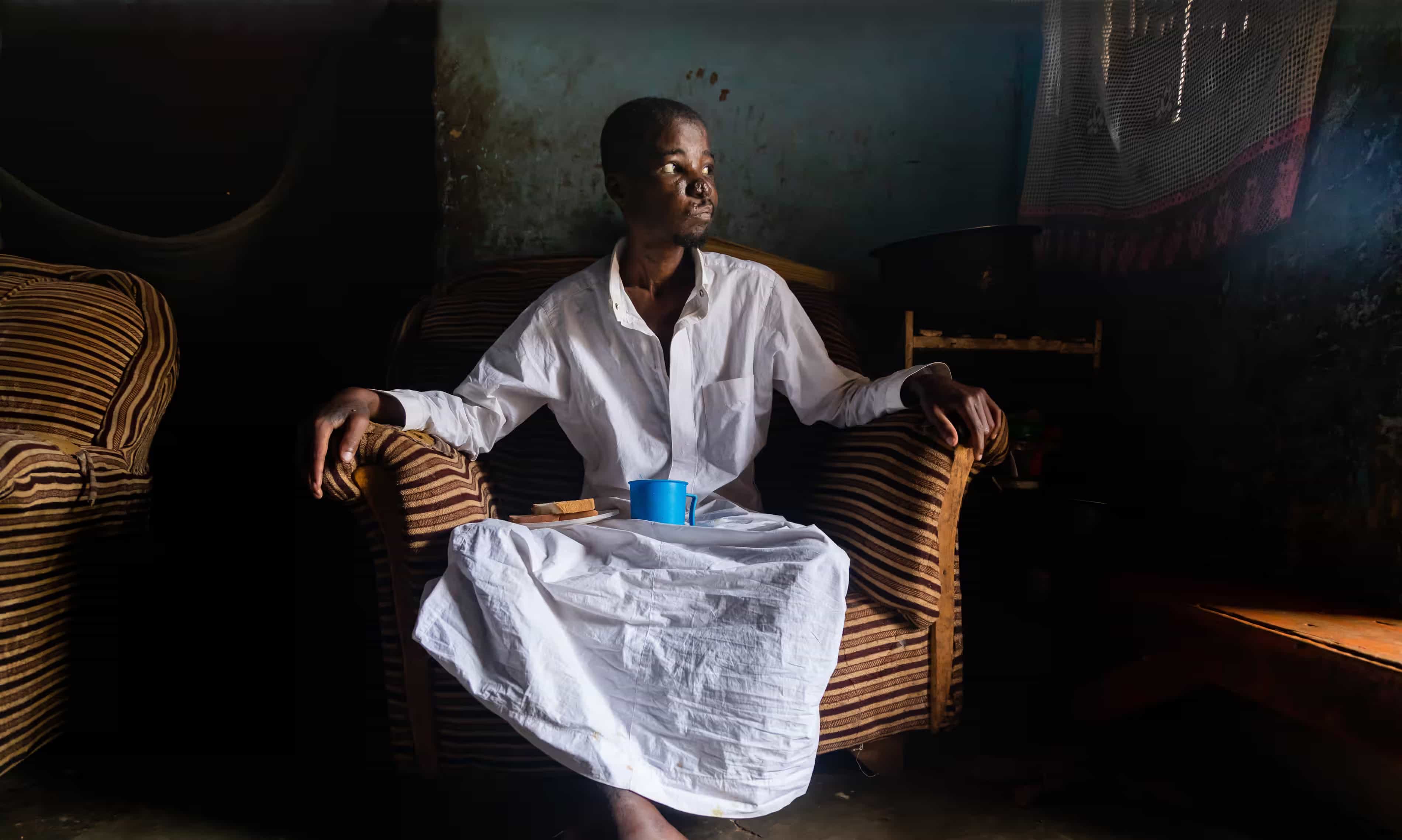
Morphine was first introduced in the country 30 years ago, but as the burden of cancer increases, thousands of people still do not have access to basic treatments or painkillers.
Alex Mubiru slowly comes out of the bare brick-walled room he shares with his brother and two nephews. Weakened by AIDS and cancer, he spends his days lying on a thin mattress in the dark, but nurse Roselight Katusabe is there to care for him, assisted by his girlfriend Florence, helping him into the cramped little living room of his mother’s house in the village of Wakiso.
Since being diagnosed in October with Kaposi’s sarcoma, a type of skin cancer common among HIV-positive people, Mubiru’s health has quickly worsened. Katusabe worries that his labored breathing could mean the cancer has spread to his lungs, but the family can barely afford food, let alone the £200 needed for tests that would allow him to begin chemotherapy at the Uganda Cancer Institute, about 15 km from the capital, Kampala. The crops planted by his mother to support the family were stolen in December. Mubiru, a 31-year-old father of three, simply says: “I want to go back to work.”
Without treatment, Mubiru’s prognosis is poor. Katusabe does her best to ease his pain, giving him morphine and antibiotics for an infection, as well as a package containing maize flour, beans, rice, and sugar. Beyond the vital nutritional support, the food allows him to take his HIV antiretrovirals without severe side effects.
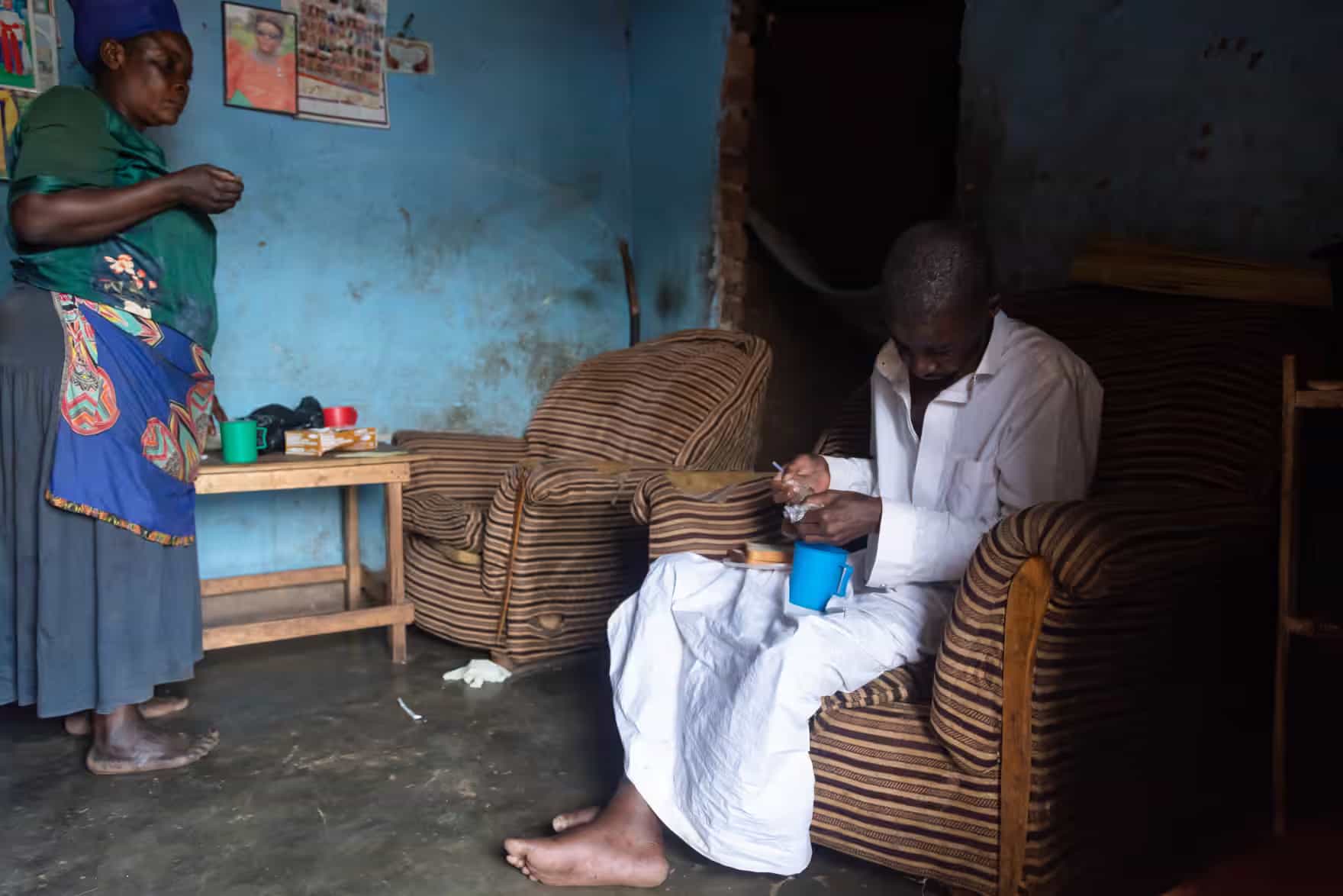
Mubiru’s situation is typical of the cases that Katusabe and her colleagues at Hospice Africa Uganda (HAU) face on a daily basis – and it highlights the immense challenge confronting this pioneering palliative care organization.
Around 70% of the 2,000 patients enrolled in HAU’s program suffer from cancer, and some are also HIV-positive. Few can afford to pay for tests or treatment for their conditions and, even when they can, it is not uncommon for doctors to make a misdiagnosis or fail to prescribe adequate pain relief. Often, by the time a patient is referred to HAU, their condition is incurable, which is deeply frustrating for the team, whose goal is to provide palliative care from the moment a person is diagnosed with a life-limiting illness.
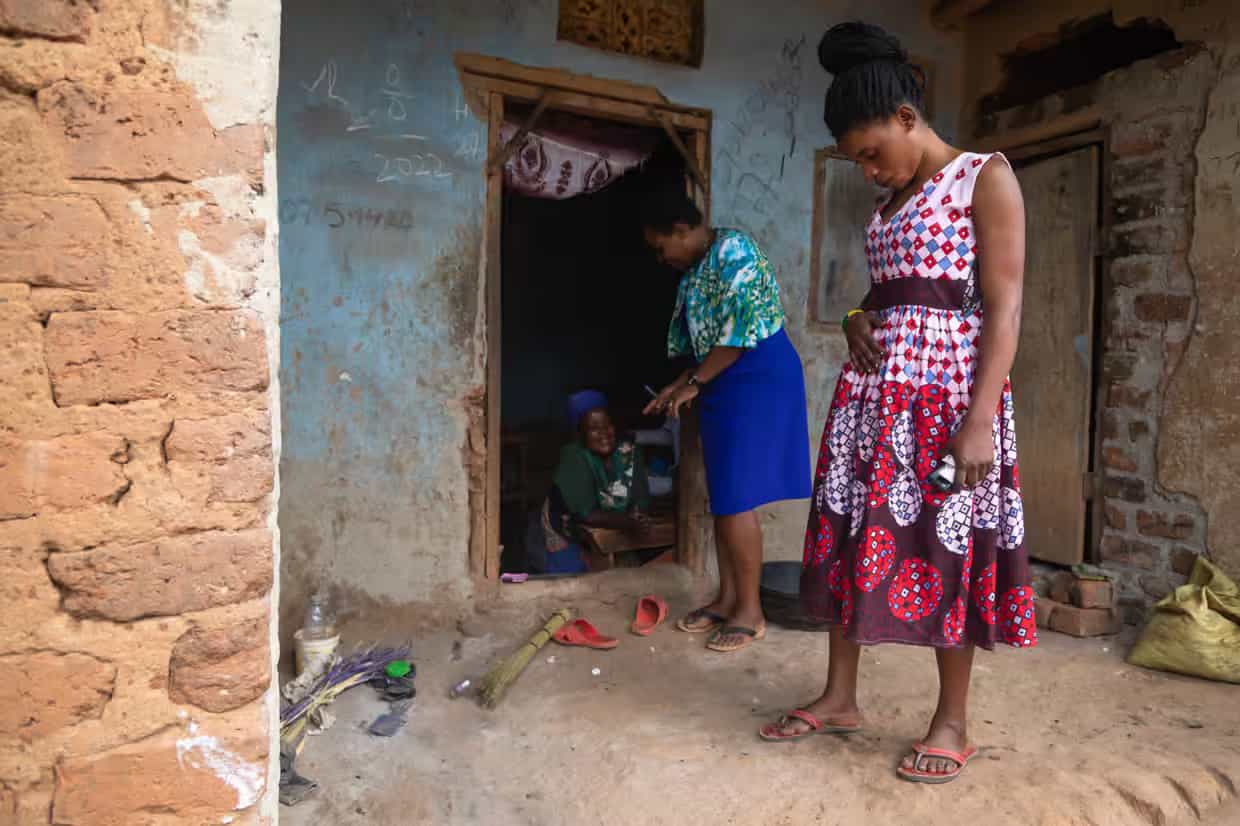
“One of our biggest challenges is breaking the stigma [around palliative care]. Some people think it is only about dying, but it is for anyone with a chronic illness that won’t go away,” explains Antonia Kamate Tukundane, program manager at HAU’s site in Mbarara, in southwestern Uganda. “Palliative care focuses on holistic support: How are you? How is your family? What other factors are influencing your illness? We provide something that doctors and nurses don’t have the time to do.
“Sometimes the patient arrives very ill and dies, but if we had known the patient earlier, we could have explained what was happening in their body, agreed on realistic goals; all of that is very helpful for the patient. Those who find us are grateful they did.”
HAU was founded in 1993 by Irish doctor Anne Merriman, who still lives in Kampala, although at 87 she has stepped back from the organization’s daily management. Today, HAU is run by a team of more than 70 healthcare professionals and administrative staff across three urban sites: Kampala, Mbarara, and Hoima in the west. It has become a model for palliative care not only in Uganda but across Africa.
In 1993, HAU became the first organization to introduce oral liquid morphine in Uganda after convincing the government that the risk of addiction was extremely low. Dr. Merriman, who had developed a formula while working in Singapore, prepared it herself “at the sink with a bucket.” “It’s as simple as making coffee, just four ingredients: morphine powder, a preservative, a pH stabilizer, and water. And it’s very inexpensive,” she says.
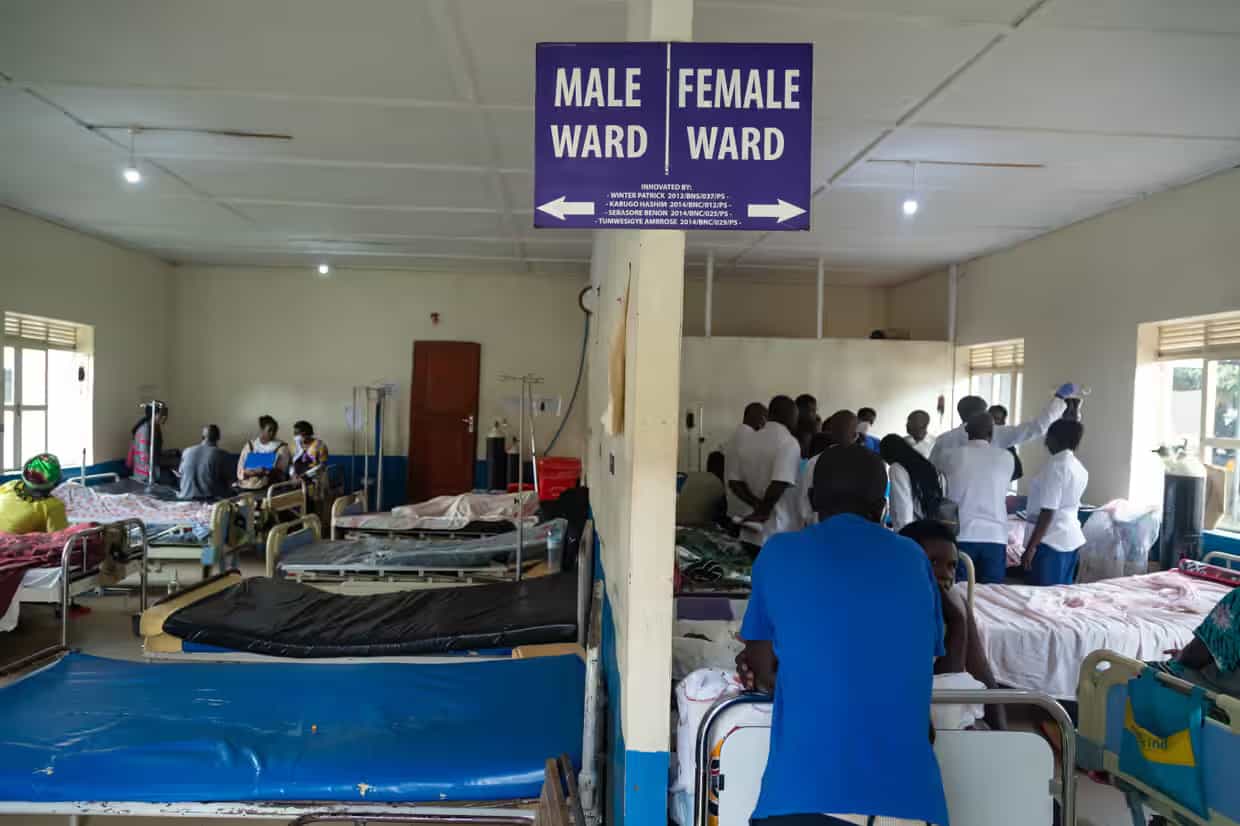
At the time, only three countries in Africa allowed access to the drug – Zimbabwe, Kenya, and South Africa – compared to 37 today. HAU can claim part of the credit through its international program, which provides training and placements for palliative care champions across the continent.
Shortage of morphine
In 2004, the government passed legislation making HAU the sole producer of oral liquid morphine in Uganda, distributed by the National Medical Stores and prescribed free of charge by nurses. Previously, only doctors and dentists were authorized to prescribe it, but with just one doctor for every 50,000 people at the time, it was vital that nurses were also trained to use it.
Today, the drug is mixed by a machine donated by the American Cancer Society, but the small facility at HAU’s Kampala site still produces only a fraction of what is needed. According to the Palliative Care Association of Uganda (PCAU), each year only 11% of the estimated 500,000 Ugandans in need of palliative care – including pain relief – are able to access it. Still, this is better than in many low-income countries, where the level of preventable pain is even higher.
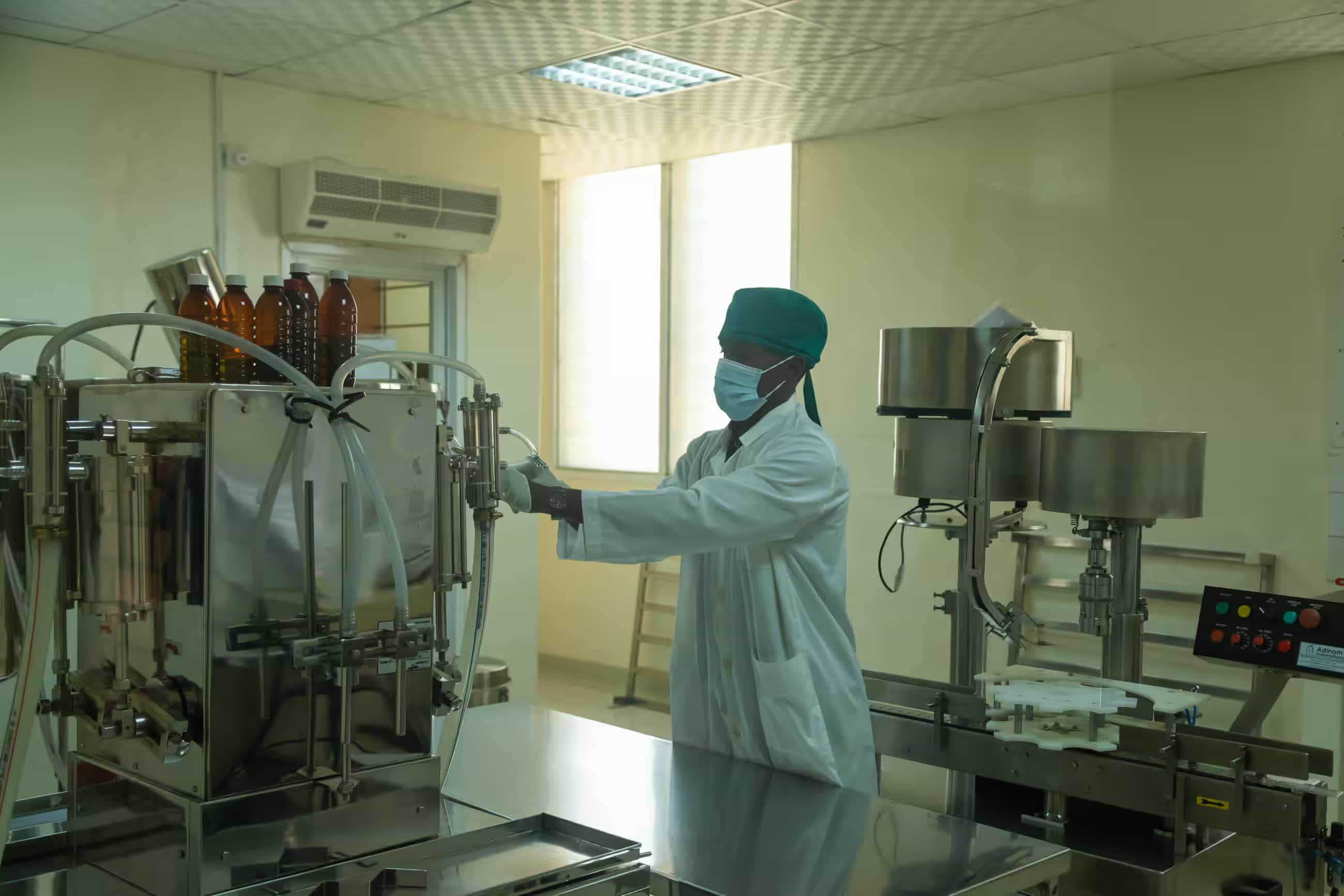
A 2018 report published in The Lancet on global palliative care described the shortage of morphine as “a grave injustice largely ignored in global health.”
“Of the 298.5 metric tonnes of morphine-equivalent opioids distributed worldwide each year, only 0.1 metric tonne goes to low-income countries, and 50% of the world’s population (3.6 billion people living in the poorest countries) receive less than 1% of the morphine distributed globally,” the report noted.
Nevertheless, Uganda has not progressed at the pace experts had hoped. “Uganda has stagnated,” says Dr. Emmanuel Luyirika, executive director of the African Palliative Care Association (APCA). “Although the government has done a fantastic job with access to oral morphine, in terms of overall health financing, it has underperformed.”
Health spending in Uganda accounts for just 2.3% of GDP, far below the 15% target agreed by African governments in 2001. The result is a health system ill-equipped to achieve universal health coverage, where hospitals are severely understaffed, the poor cannot access treatment, and the wealthy travel abroad in search of care.
In the oncology department of Mbarara Hospital, Sarah Nabushawo is the only government-paid nurse overseeing patients. “It’s very stressful,” she says. “Patients expect you to work full-time, but we only have one oncologist.”
Quality of life
Outside Mbarara Hospital, up to 100 people wait each day on wooden benches to be assessed. Those who are eventually seen are examined by a junior doctor in a cramped room where privacy is impossible. Seriously ill patients and those needing chemotherapy or blood transfusions remain in the ward, where it is common for patients to sleep on the floor. In the pediatric ward, as many as three children may share a single bed.
The lack of public funding means not only that frontline services are overwhelmed, but also that the government cannot uphold its commitment to palliative care. A palliative care team set up by the Ministry of Health in 2022 to oversee the integration of palliative care into the health system has no dedicated budget.
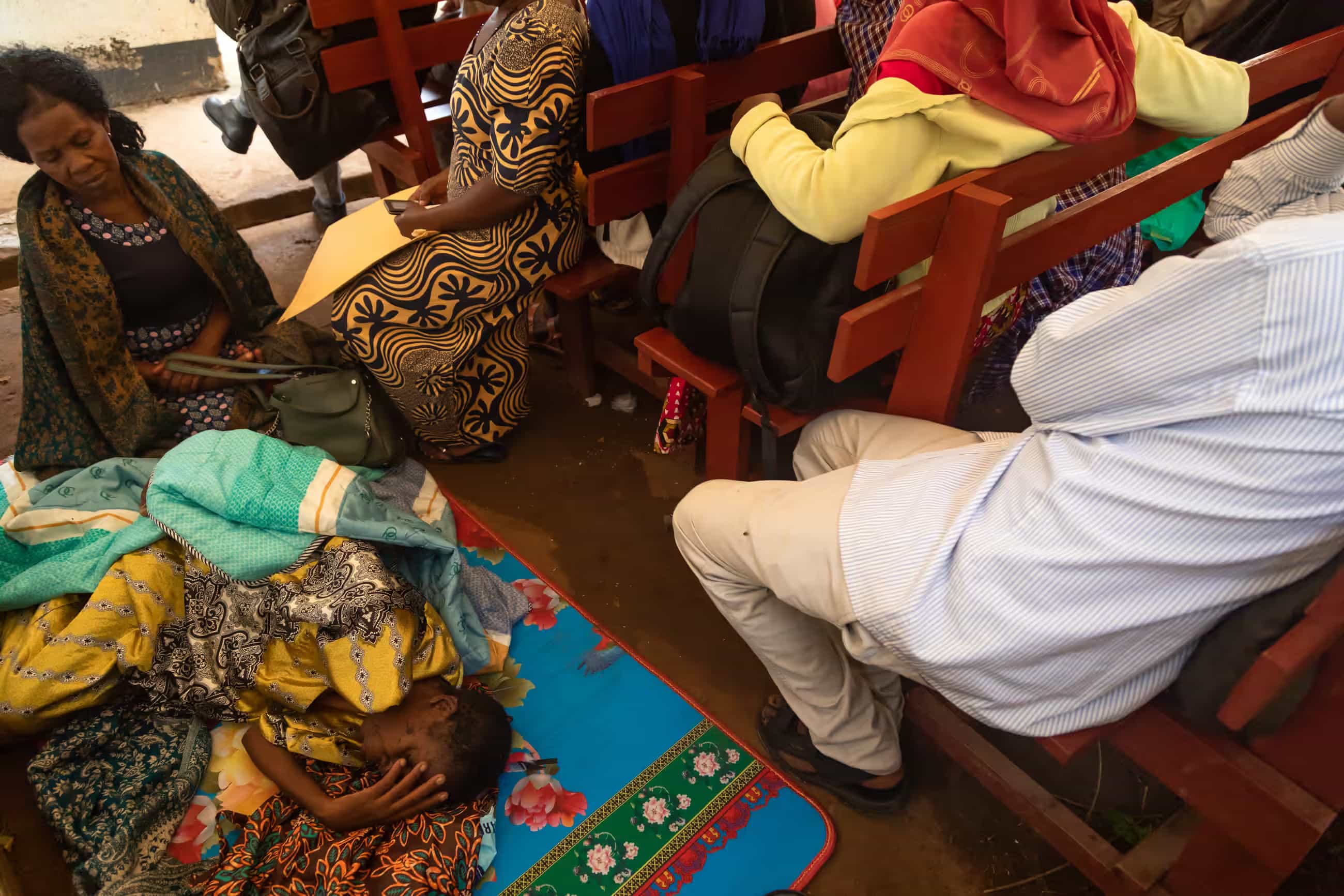
Nurses and doctors who obtain a qualification from the Institute of Hospice and Palliative Care in Africa (IHPCA), the educational arm of HAU, eventually return to their previous posts due to the lack of budget for specialists.
“At least 226 health facilities offer some form of palliative care,” says Mark Mwesiga, executive director of the PCAU. “But they do it as an additional role, and we would like the government to recognize, recruit, pay, and retain people as palliative care providers.”
Dr. Muwanga Moses, deputy commissioner for medical services at the Ministry of Health, acknowledges that “resources are limited,” but suggests that the lack of palliative care in hospitals is more of a structural failure than an economic one. “It is the hospital’s responsibility to create the right structure to create jobs and manage the budget.”
The government has also delayed legislation. A palliative care policy aimed at creating a framework for national standards, including paid positions in hospitals, has remained in draft form for five years. “Since we started five years ago, the person in charge has changed three times,” says Luyirika. “Uganda has been dragging its feet.”
The legislation would also raise awareness of palliative care at all levels, from potential patients to community leaders and health professionals. “Most of our patients have consulted different doctors in several regions,” explains Katusabe. “They are desperate to find a cure – and at some point, they come across someone motivated by money; they turn to herbalists or spiritual leaders who don’t tell the truth. By the time they come to us, they’ve spent all their money. They have no food and cannot afford basic medicines.”
As the burden of non-communicable diseases grows, so does the need for palliative care. The Uganda Cancer Institute in Kampala, the country’s only facility offering radiotherapy, records up to 6,000 new cases per year, according to consultant hematologist Dr. Henry Ddungu. “That’s just the tip of the iceberg. Fewer than 20% of cancer patients come to the institute. Among those who do, more than 80% present with either stage three or stage four disease – and all require intensive palliative care.”
Dr. Ddungu would like to see a dedicated palliative care unit at the Cancer Institute. In the meantime, patients continue to be referred to HAU. But drastic funding cuts have further squeezed HAU’s already limited resources. Over the past decade, its income has been cut in half – from 7.5 billion Ugandan shillings per year in 2012 to 3 billion in 2022 – resulting in major staff reductions and fewer home and hospital visits. Weekly sessions where families, including children, were given respite from caregiving duties now take place only once a month.
Much of the money previously came from AIDS programs, which stopped funding palliative care as more people living with HIV began taking antiretrovirals. Today, international aid is heavily directed toward preventive and measurable activities. Palliative care – with “softer” outcomes such as restored independence, dignity, and relief from distress – is harder to sell to donors.
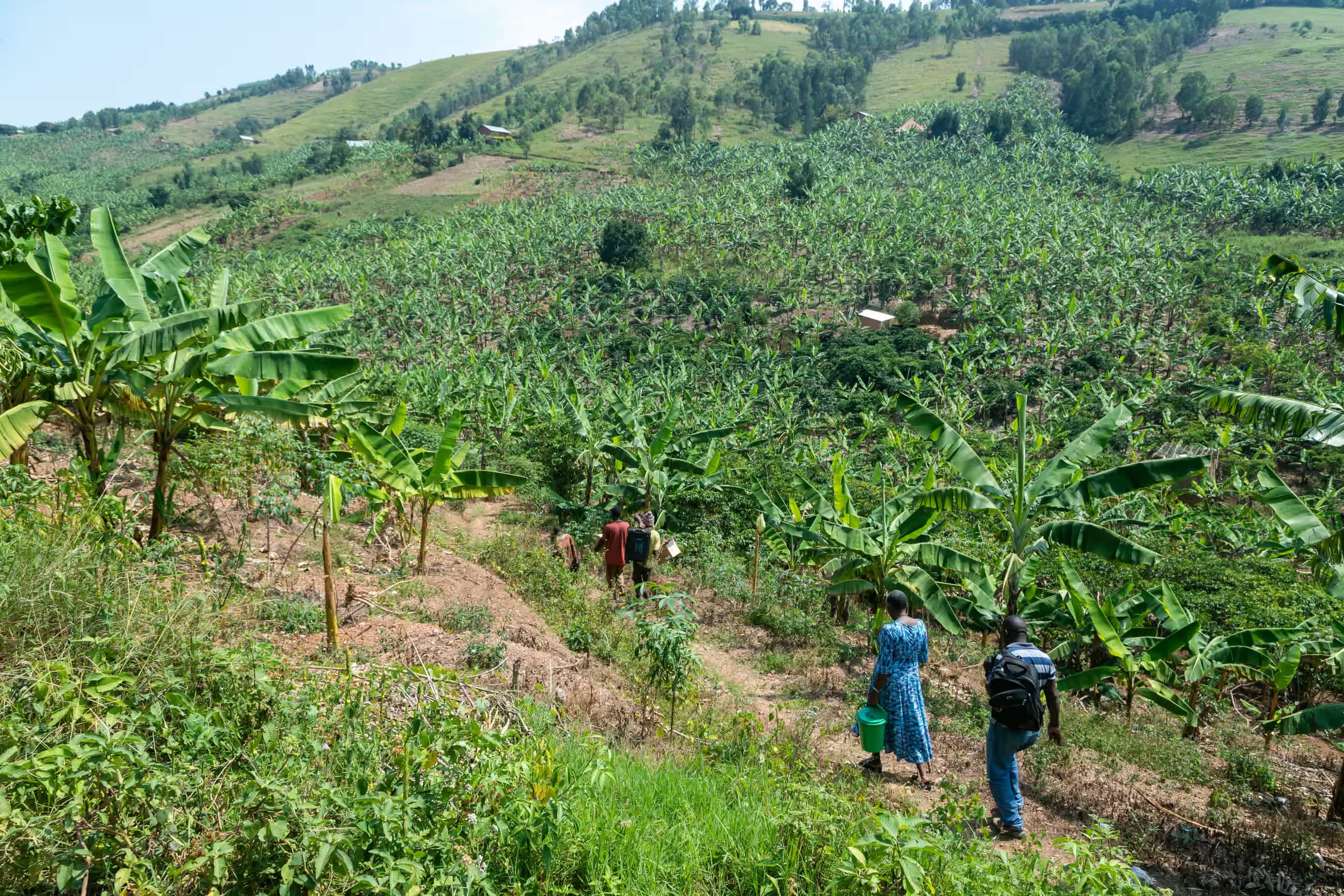
The funding cuts mean that every HAU staff member has to be versatile. At Mobile Hospice Mbarara, head nurse and health services coordinator Martha Rabwoni prepares to visit Beinomugisha Ephraim, a 60-year-old man with AIDS and advanced-stage cancer. On her last visit, she had to oversee the construction of a bed after a colleague reported that he had been lying on the dirt floor.
To reach this remote home requires a 15 km drive, the last stretch along a dusty red road, followed by a walk through a banana plantation. But Rabwoni is pleased to find Ephraim sitting up in bed, smiling. She has brought him clean sheets, soap, food, and morphine. He tells her he feels better: “Before, I couldn’t sleep day or night. I was so cold. I just lay there listening to my pain, but now I think about other things.”
Still, Rabwoni worries that the family is unable to properly care for Ephraim. They barely survive on the meager wages his daughter-in-law earns working in the surrounding farms. “Palliative care is about so many other aspects. We do what we think is necessary,” she says, making a note to inform the local council that the family has neither a latrine nor a kitchen – basic needs it is responsible for, even in the most remote communities.
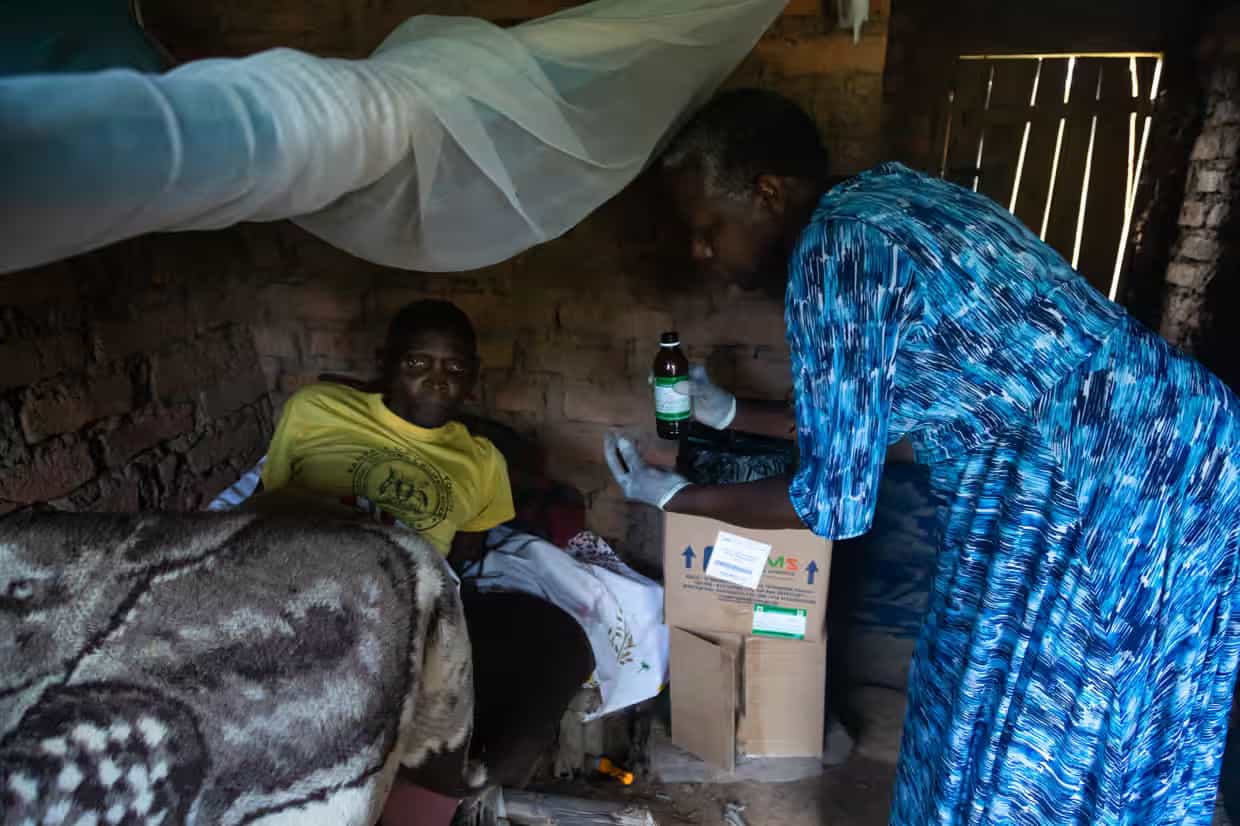
When her colleague visits Ephraim a few days later, he is still in good spirits and entertains them with stories. But the next morning, they receive a call telling them that he had died during the night.
Back in Kampala, Katusabe checks in on Mubiru. “With the nutrition, he has a bit of energy, and now he can walk from the house to the courtyard,” she says. HAU has funded some of the tests he needs, but not all, and he still has not begun the vital cancer treatment. In the meantime, Katusabe continues to provide him with the practical and psychological support that her limited budget allows.
“In palliative care, we never give up,” she says. “There is always something we can do.”